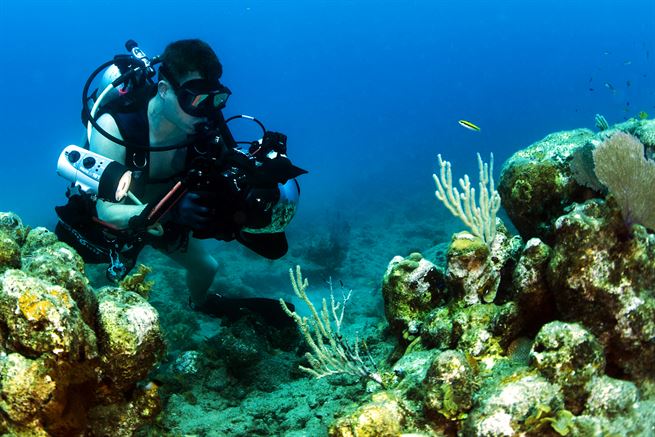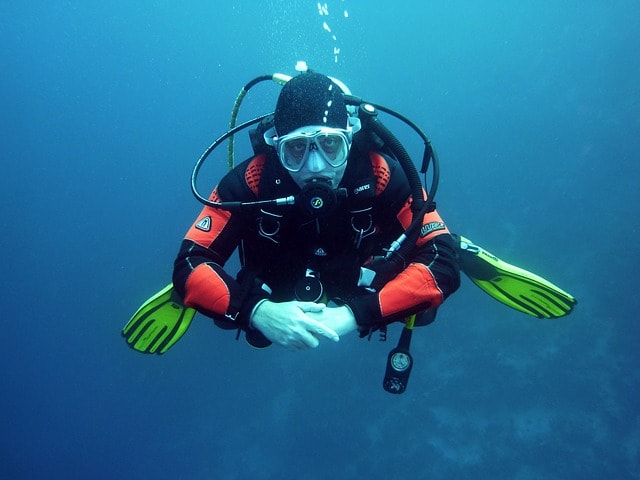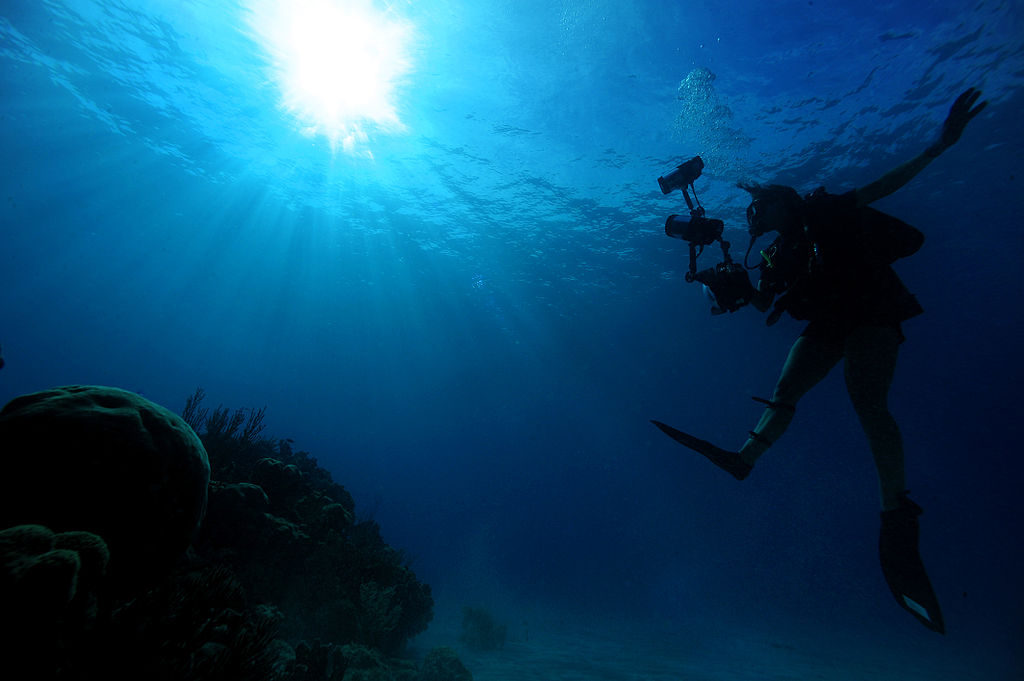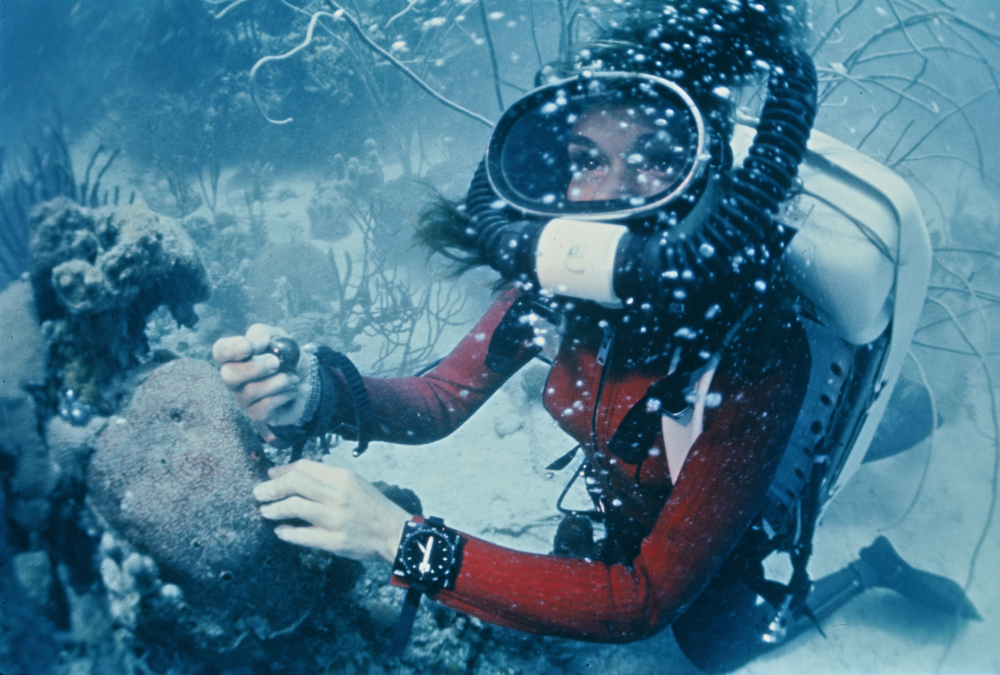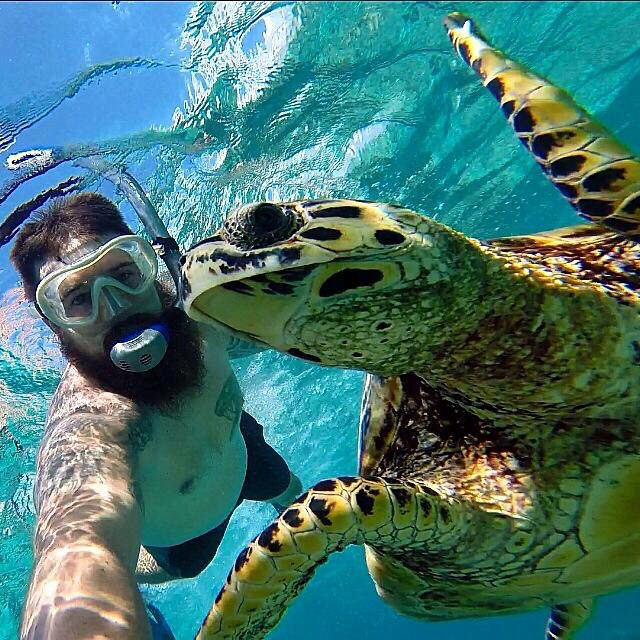Underwater Photography is a nuanced art. With a camera in your hands and that underwater gear tucked to your body, you can set out to explore the great depths of the planet’s waters, discovering what lies beyond. Welcome to the world of Underwater Photography!
Follow this guide for beginners to dive into this beautiful art and take your first underwater photograph.
Introduction
Simply put, underwater photography is the art and science of taking (more creatively correctly speaking, making) photographs under water. There are several activities during which underwater photography can be performed- snorkelling, swimming, scuba diving, and surface supplied diving, just to name a few.
Become a skilled diver first!
If there has been a single most important thing ever that’s been repeatedly stated in the field of underwater photography, it has to be the fact that one must first be a skilled diver before embracing this art.
Before you get into the waters with your camera and other gear, master buoyancy control and hone your diving skills. The last thing you’d want is crashing onto a coral reef, destroying the organism.
What’s so interesting about underwater photography?
The fascinating diversity of underwater life, the rich colours of the coral reefs and fish, and the unfathomable depths of the mighty oceans can all be beautifully brought out through stunning underwater imagery.
More importantly, underwater photography has given a major push to marine life conservation programmes.
The advent of digital photography has revolutionised underwater photography to a greater extent than it has affected other photography forms. It is now easier (and cheaper) than ever for an amateur to dive into the water with an affordable camera- an activity, which could once only be undertaken by the wealthiest professionals.
Equipment
Underwater photography sure is very equipment intensive. You not only need the right diving equipment (which you can rent) but also the right camera, underwater camera housing, and flash/strobe. With every equipment comes a price tag but that need not hamper you from pursuing your interest in underwater photography.
Cameras
Cameras basically come in three main flavours- compact cameras, also called point and shoot cameras, mirrorless cameras, and DSLRs (Digital Single Lens Reflex Cameras). Which one you choose is a very personal choice but there is no denying the fact that a DSLR (or a mirrorless camera) offers much more creative freedom, thanks to its creative controls than its counterparts.
There is also a new addition to the world of underwater photography: GoPro cameras. These are built to last in the toughest environments. Most GoPros also have wide angle lenses, which is a useful asset to underwater photography since they allow the photographer to get as close as possible to the subject underwater.
Housings
Housings are used to encase the camera to protect it underwater. The housing is undoubtedly the most important component after the camera and the lens. Housings are made of Aluminium or Polycarbonate or a combination of the two.
Lenses and the Focal Length Factor
Underwater photography uses specialised lenses that all serve different purposes. Normal and telephoto lenses are best left back home when shooting underwater.
Wide-Angle Lenses
Underwater photography heavily relies on wide-angle lenses for a very important reason. When you are shooting underwater, you would want to get as close to as possible to the subject so that the light bouncing off the subject has to pass through a minimum amount of water while on its way to your camera. This helps prevent loss of colour and detail in the subject to a great extent, a phenomenon otherwise common underwater.
Macro Lenses
The second most important lens type when shooting underwater is a macro, which again allows the photographer to get in as close as possible to the subject to film stunning close-ups with rich detail otherwise unseen.
Fisheye Lenses
Fisheye lenses are often used underwater. They’re great for capturing the whole subject in a single frame, thanks to their ultra-wide curvilinear (spherical) perspective.
The Focal Length Factor
The effective field of view of a lens, that is, the portion of the image can be captured onto the camera sensor, largely depends on the size of the sensor itself. Consequently, the field of view of a 17 mm wide-angle lens is going to be really wide on a full-frame DSLR with a 35 mm equivalent sensor but is going to be lesser on a DSLR with a cropped sensor.
Therefore, the focal length of any given lens effectively “increases” as the size of the camera sensor it projects its image upon reduces. A wide-angle lens of 17 mm might behave as a 27 mm lens (called a 1.6 x Focal Length Factor) on a cropped sensor camera for this very reason.
External Strobes
Strobes are one of the most important pieces of equipment when shooting underwater. The strobe aims to combat the major challenge of shooting underwater: loss of colour and contrast.
The strobe light adds light to the scene underwater, making up for the loss of the reds and longer light wavelengths underwater (water absorbs reds and hence appears blue itself). A vital accessory for a serious underwater photographer!
What are the key elements of a good underwater photo?
A great underwater photo has everything under the control of the person behind the camera: focus, exposure, subject, and composition.
Focus
Focus is made difficult underwater on account of a number of factors including what is referred to as backscatter, the phenomenon in which light from the camera flash bounces off the plankton or particles in water (however clear it might appear) back into the camera. This manifests itself as spots or blotches in the photos.
You can overcome backscatter by getting as close as possible to your subject and using an external strobe, which uses specially positioned lights to minimise backscatter.
Exposure
Exposure refers to the amount of light that is captured by your camera. You can either set your camera to expose in the ‘Auto’ mode, or better still, use full manual controls by dialling in the aperture, shutter speed, and ISO while taking your photographs for ultimate creative freedom.
Subject
If there is one thing that takes precedence over every other technical detail, it has to be the subject. As an underwater photographer, you need to understand your subject and its behaviour well to anticipate its motion while shooting.
Composition
Composition refers to the way you frame your shot underwater. It is generally recommended to shoot your subject with the camera pointing up towards the sky. This helps the subject ‘stand out’ against the blue background rather than merging into the ocean floor, which is usually a hodgepodge of details, all struggling for visual attention.
What are some Camera Care and Maintenance Tips?
It is important to properly care for your underwater camera equipment. Here are some vital tips that can make all the difference:
Consider the Dive Conditions
Fresh water and salt water dives each mandate different measures for care and maintenance of underwater equipment.
Never leave your underwater housing out in the sun. This can cause fogging due to condensation.
If the water on the surface is hot and that several feet below is cold, fogging will be more likely.
Cleaning & Maintenance
After each dive into saltwater, rinse your housing in freshwater for some time. Operate all controls. Use a towel to dry the housing soon afterwards.
Keep desiccant sachets in your housing to prevent fogging.
Make sure you get your camera and housing serviced routinely by professionals authorised to do the job.
Storing your Gear
Do not leave your equipment packed as it is after your journey ends. Open your bag, inspect all equipment before storing away.
Do not leave any equipment, particularly the optics, with any water stains.
Never store your equipment before it has been rinsed in fresh water with all its controls operated to remove any specks of salt that might be sticking in the crevices.
What are the best tips and techniques for beginners to shoot underwater photos?
Understand your subject
Underwater photography, like wildlife photography, relies heavily on the photographer’s knowledge of the subject. A photographer who knows and understands the behaviour of what lies ahead of his lens is likely to capture better shots than another who has no clue about his subject.
Take More than One Shot
There is no more a need to keep changing films when you shoot in the modern era of digital photography. Consequently, there is no excuse for not taking more than one shot. Capture as many shots of your subject as you can, from different angles, experimenting with different camera settings. You never know which one of them could be that prize winning shot of a lifetime!
Approaching your subject & Familiarising yourself with your gear
Practice well with your camera equipment before you enter the water. Enter a dimly-lit room and take some test shots with your camera and flash. This way, you’ll familiarise yourself with your gear before you enter the underwater environment, letting you focus on what’s even more important- getting the right shots instead of fumbling with the camera controls when that beautiful fish is posing right in front of your camera.
It is important to approach the subject as closely as possible in underwater photography. Make sure you calmly approach the animal and keep a steady pace.
Conclusion
Underwater photography is one of the most beautiful arts and sciences, which can be mastered with practice. The right equipment is, without a doubt, important, but that need not hamper you from unleashing your creative genius. Make the best of your equipment, and remember that the best camera is the one you have with you.
Happy underwater shooting!
Here some Diving Cameras Reviews globosurfer.com






